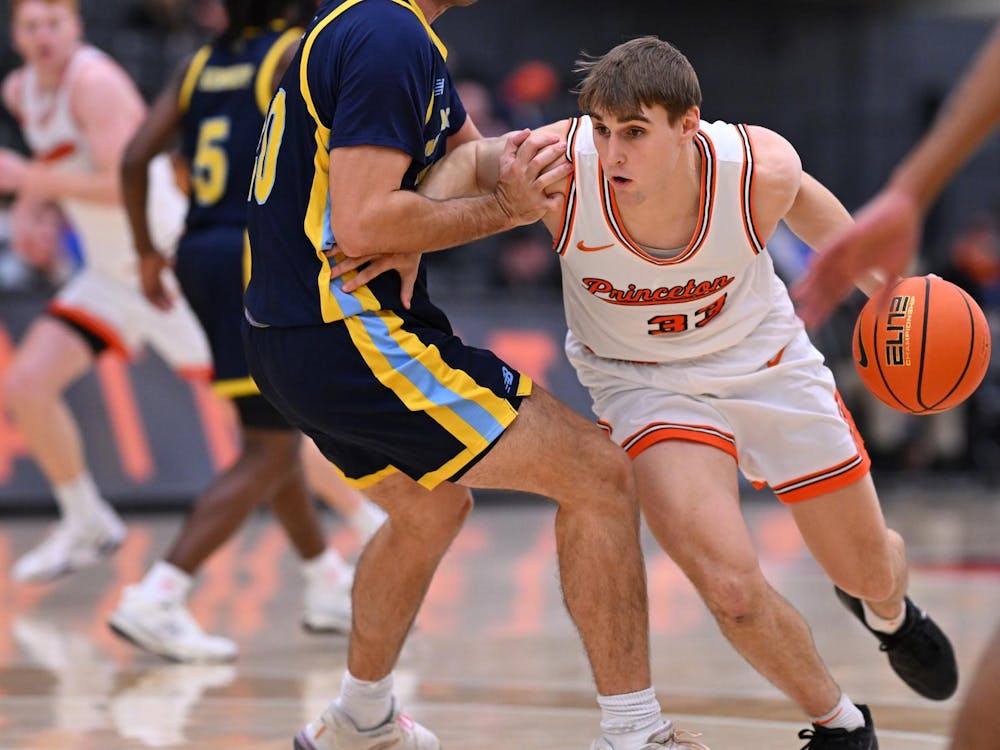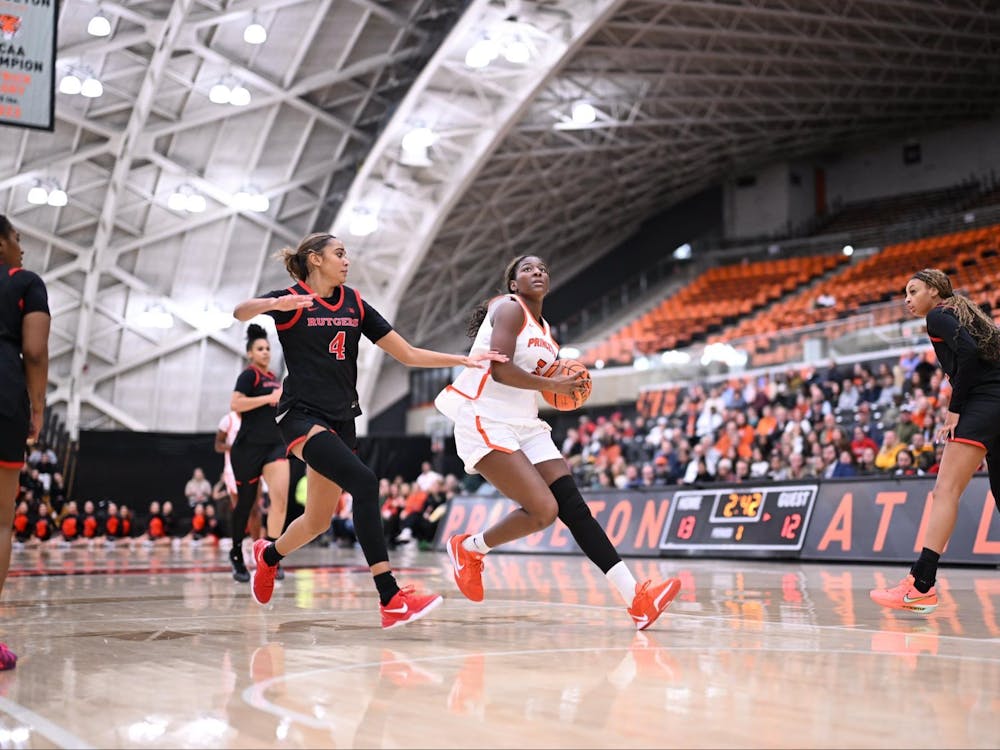Last April, the University Board of Trustees approved the Wythes report, which stated that incoming Princeton undergraduate classes should be increased by 125 students. Since then, considerable discussion has arisen over the effect this report will have on athetes on campus.
Though the report affects many areas of campus athletics, the most prominent concerns regard the recommendation that no varsity athletes will be among the 125 additional students admitted each year.
"Because the number of student-athletes is determined by the Ivy League-mandated size of varsity programs, this category is not expected to grow," the report reads.
What is not clearly explained in the report is the connection between the size of varsity teams and the total number of recruited athletes. While it is true that the Ivy League limits the size of teams — which includes both recruited and walk-on athletes — it is not true that the league restricts the number of applicants who receive special treatment for being a prospective varsity athlete.
Were Princeton to admit more varsity-caliber athletes, it would not have to violate NCAA regulations. Teams would merely have fewer walk-ons.
According to Dean of Admission Fred Hargadon, Princeton currently accepts among the highest percentages of athletes in the Ivy League — 16 to 17 percent annually.
But, Hargadon points out that while Princeton and Harvard offer the largest number of varsity sports, the total number of athletes that Princeton accepts every year is smaller than in all Ivy League schools except for Columbia and Dartmouth.
In light of this, Director of Athletics Gary Walters '67 said, "I'm a little disappointed to hear that the overall enrollment would increase by 500 spots without allowing any space for athletes."

Though the number of recruited athletes might not grow, the report might still have a major positive impact on athletics due to one surprising possibility: Wythes opens the door for transfers.
"An increase in the size of the student body could also open the possibility of admitting a small number of transfer students of exceptional abilities and promise," the report explains.
Princeton fans should not yet strike up a clamor for junior college transfers to the men's basketball team, however. The odds seem slim that the Wythes committee intended "exceptional abilities" to include vertical leap or bench press. Hargadon said that in any one year, the number of new students who are varsity athletes will not increase. This means that if an athlete is accepted as a transfer, another athlete will be turned away on his first application.
While expanding the size of the student body might not touch varsity athletics, its effects will be made quite pronounced by the construction of several new buildings.

The committee recommended the addition of a sixth residential college to be placed in one of three possible sites: across from McCarter Theater, on the golf course or between Dillon Gym and Baker Rink. According to Director of Physical Planning Jon Hlafter '61 GS '64, the leading possibility is the area near Dillon.
If this site is eventually chosen, both Hlafter and Walters agree that Dillon could be renovated, depending on the specific location of the buildings. If the college is placed closer to the gym than the ice rink, it is more likely that Dillon will be renovated during the construction of the college, Hlafter said. However, if the area closer to Baker is chosen, renovations to Dillon may be postponed.
"Dillon is in dire need of renovation, and I would be disappointed if something didn't happen in the 10- year time horizon," Walters said. Dillon has not undergone a major overhaul since its construction shortly after World War II.
If the trustees decide to place the new college near Dillon, it would most likely eliminate many of the tennis courts, further encroaching on already diminishing recreational space on campus.
For example, exercisers in the new Stephens Fitness Center already often have to wait in line for some equipment at peak hours. The problem can only get worse when the student body is increased by 10 percent.
Space could also become a problem for intramural athletes who wish to use Poe Field, which will be reduced by the construction of the new genomics center and a new dormitory along the northern edge of the field, Hlafter said. These buildings may not impact field space after completion, but Poe could feel the brunt of the construction effort.
The University is aware of these concerns and plans to preserve open space whenever possible.
"If you describe open space as green areas, lawns and trees, [preservation is] an objective," Hlafter said.
The recently completed parking garage adjacent to the cogeneration plant may alleviate some of the space issues. Prime locations near the center of campus, currently occupied by pavement, may give way to lawns and trees, according to Hlafter.
"It's likely the Dillon lot will be made smaller," Hlafter said. "In the long-range plan, instead of having open parking lots, we would try to make better use of them."
One of the more intriguing ideas for the use of new space, championed by Walters, is the construction of one or two artificial turf facilities for use by club and intramural programs.
Such a step would go a long way toward addressing the problem of lack of field space that might otherwise eventually force these programs across Lake Carnegie to West Windsor. Making West Windsor the primary area for non-varsity sports at the University could lead to a number of problems, including transporting athletes safely from campus to the fields.
Club sports already often make that trek, but they will still undergo considerable change as a result of the Wythes report. As of now, club sports are in perpetual struggle with the athletics department for funding. It is likely that the report will only exacerbate this haggling.
More than 50 percent of the current student body participates in either varsity or club sports. Since the Wythes report does not allow for additional varsity athletes, incoming athletes would be more likely to participate in club sports. Though they will improve the quality of club sports teams, the influx of athletes will increase demand for new sports and larger budgets.
The Wythes report explains that flexibility was the "touchstone of the committee's review." Given the challenges the committee will have in dealing with athletics, this promise may have to hold true.







